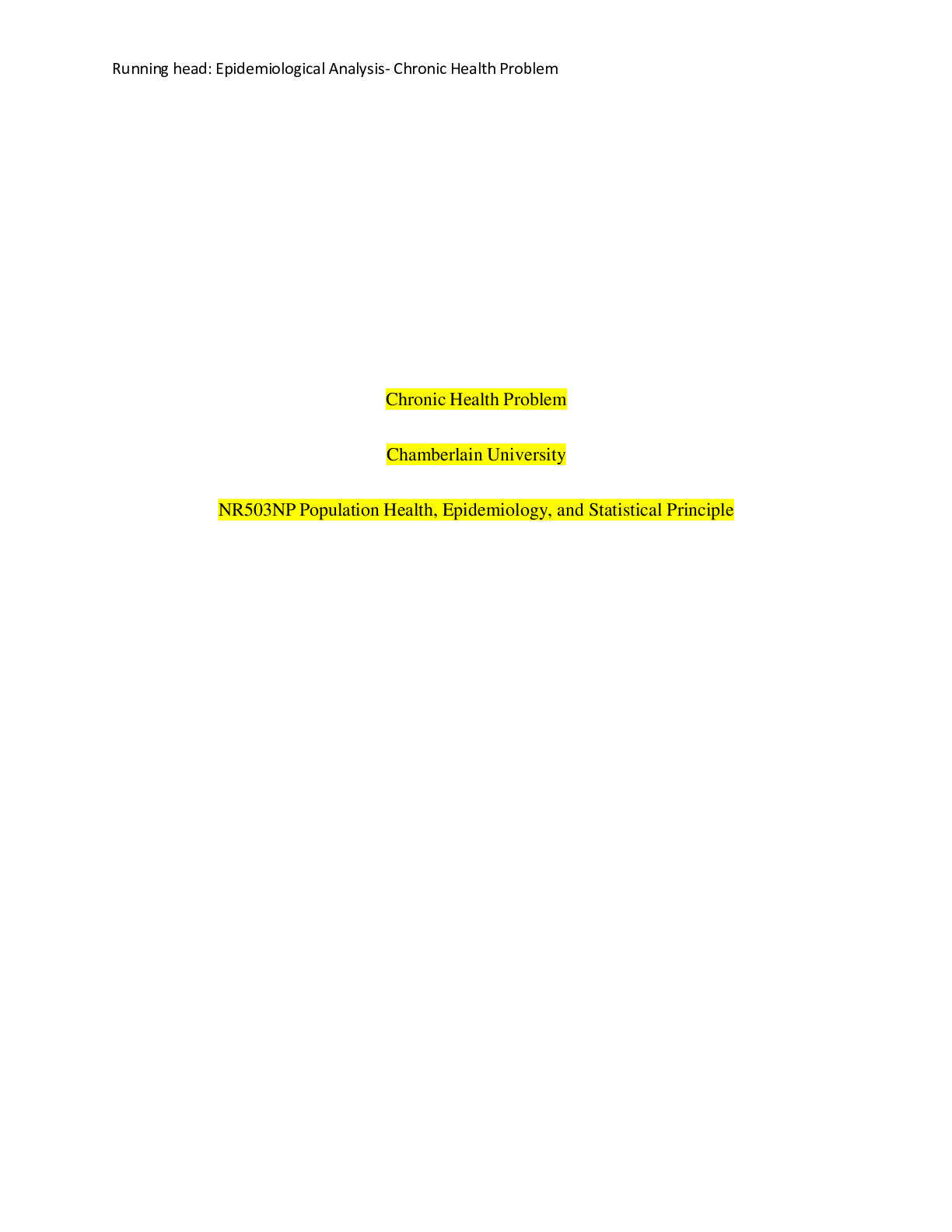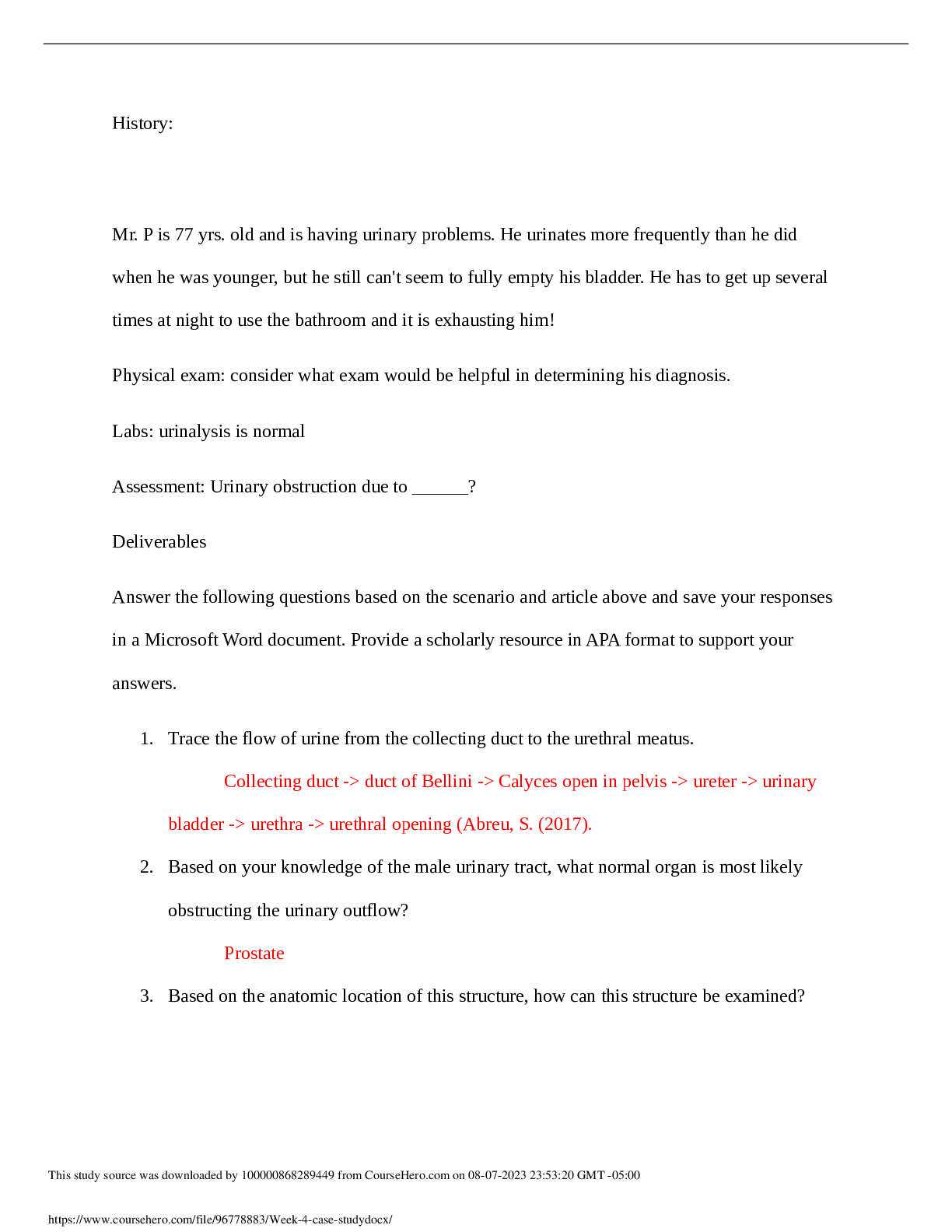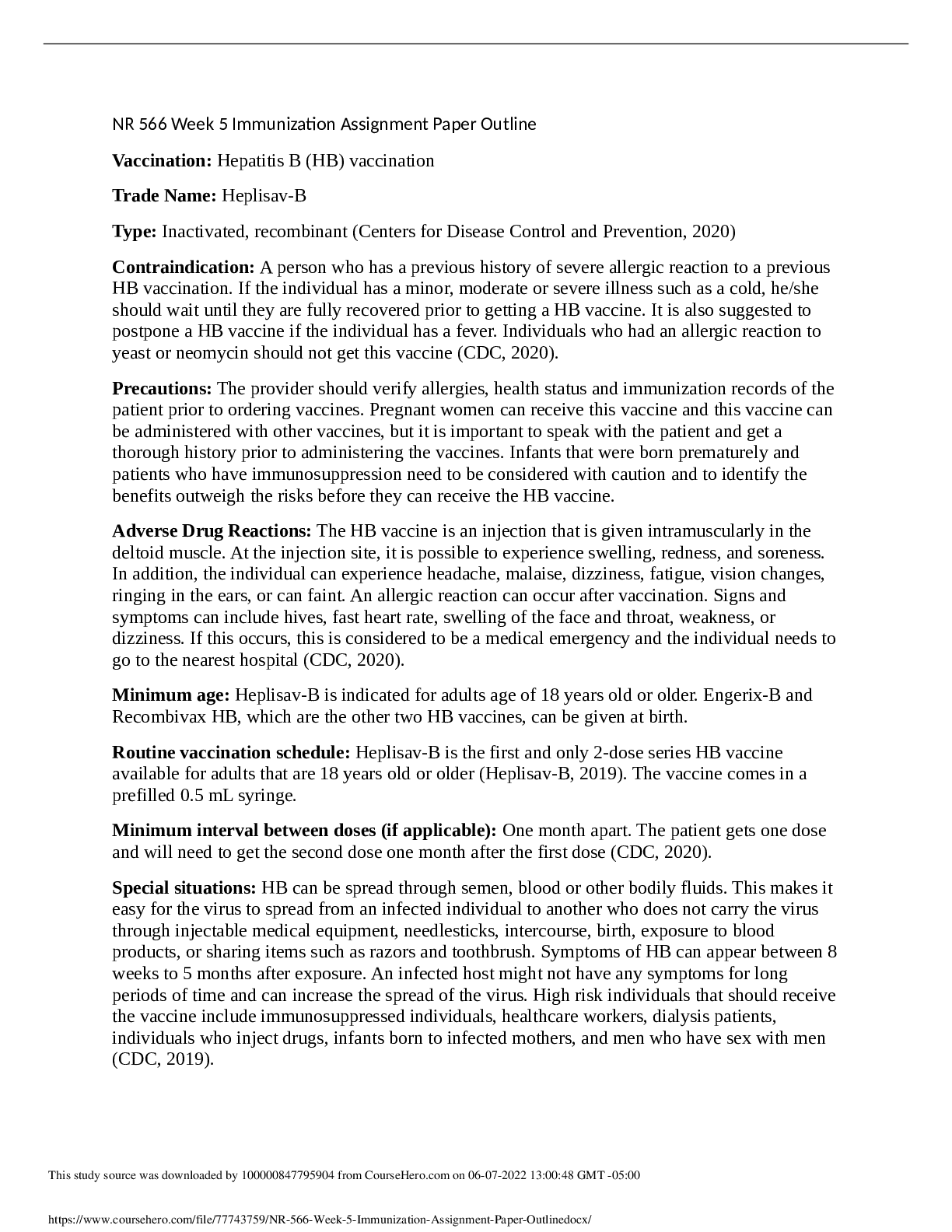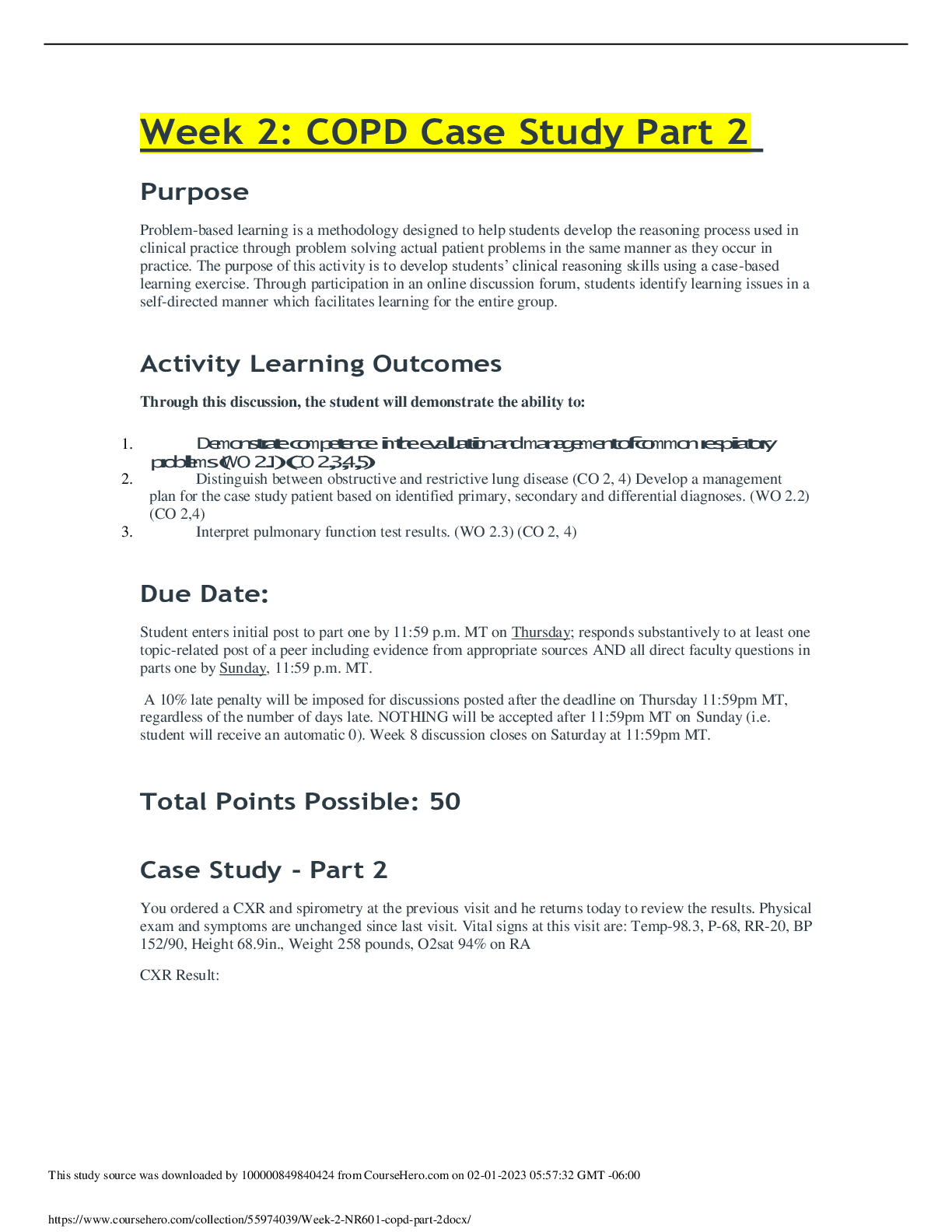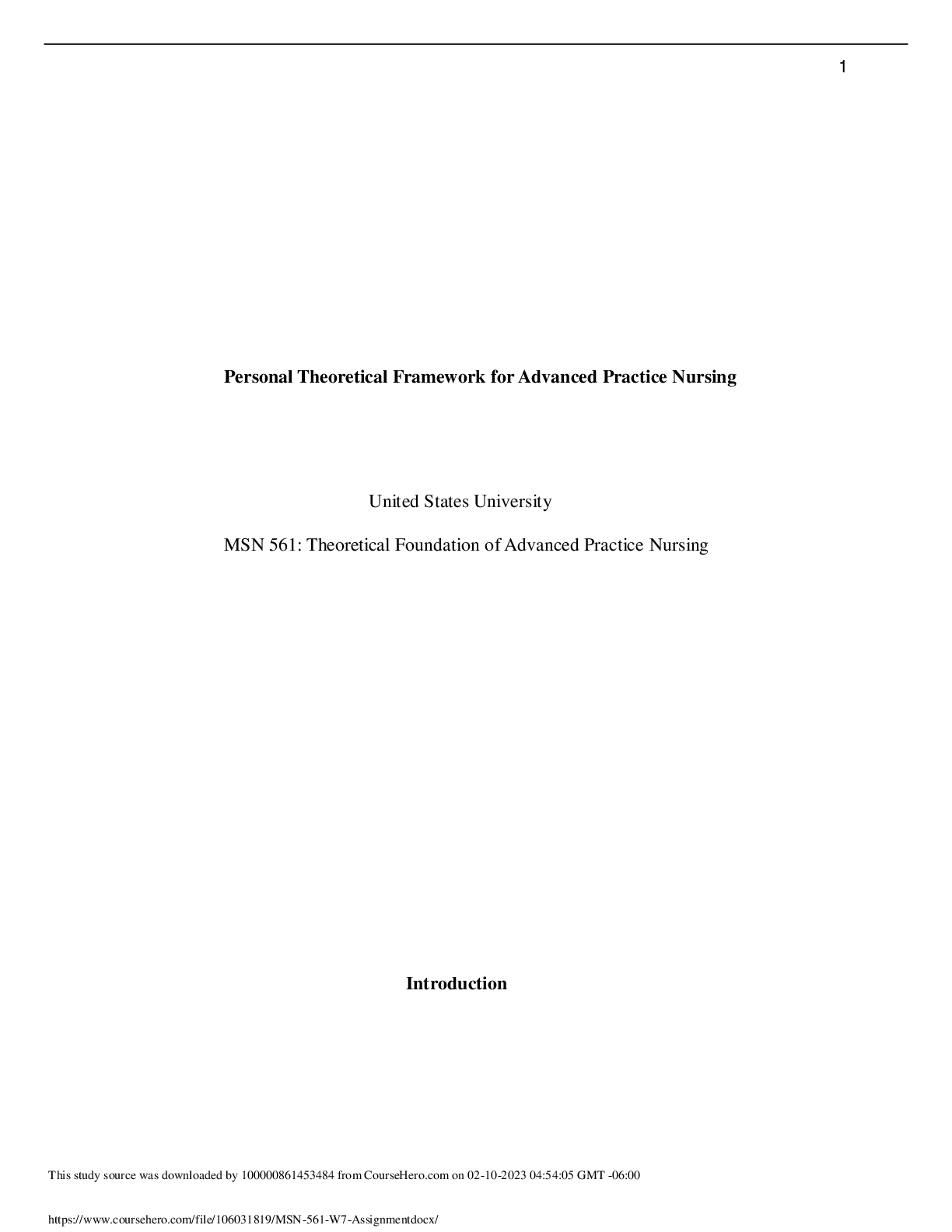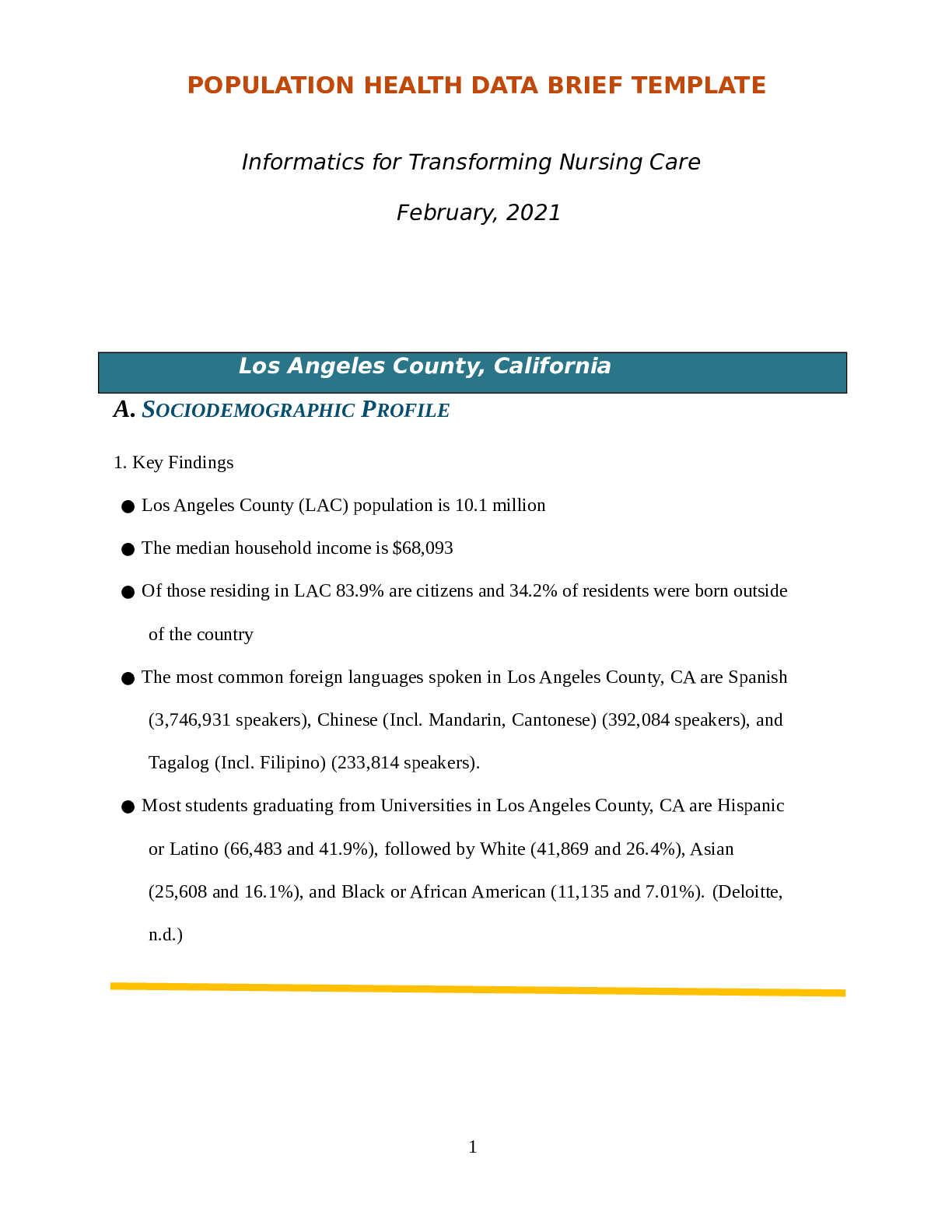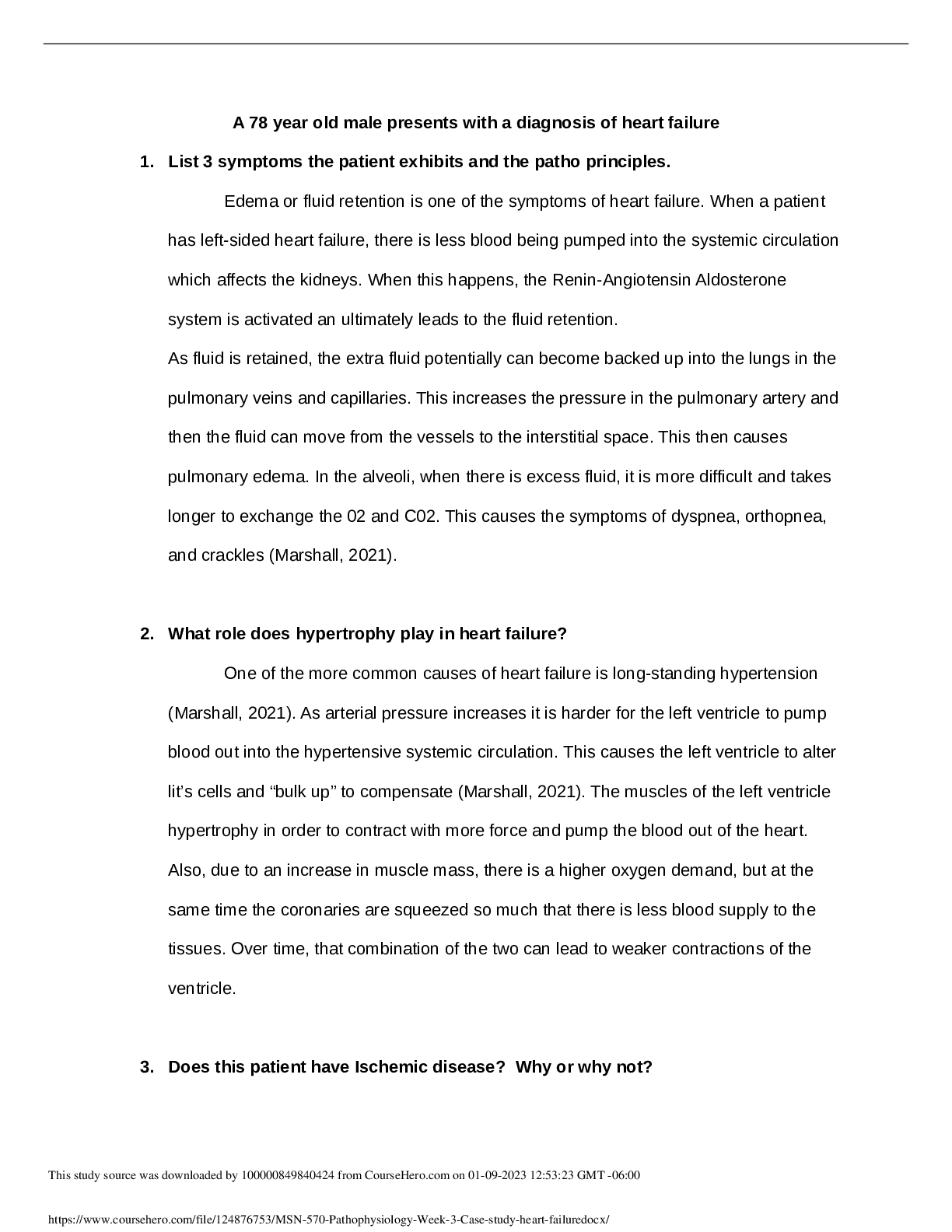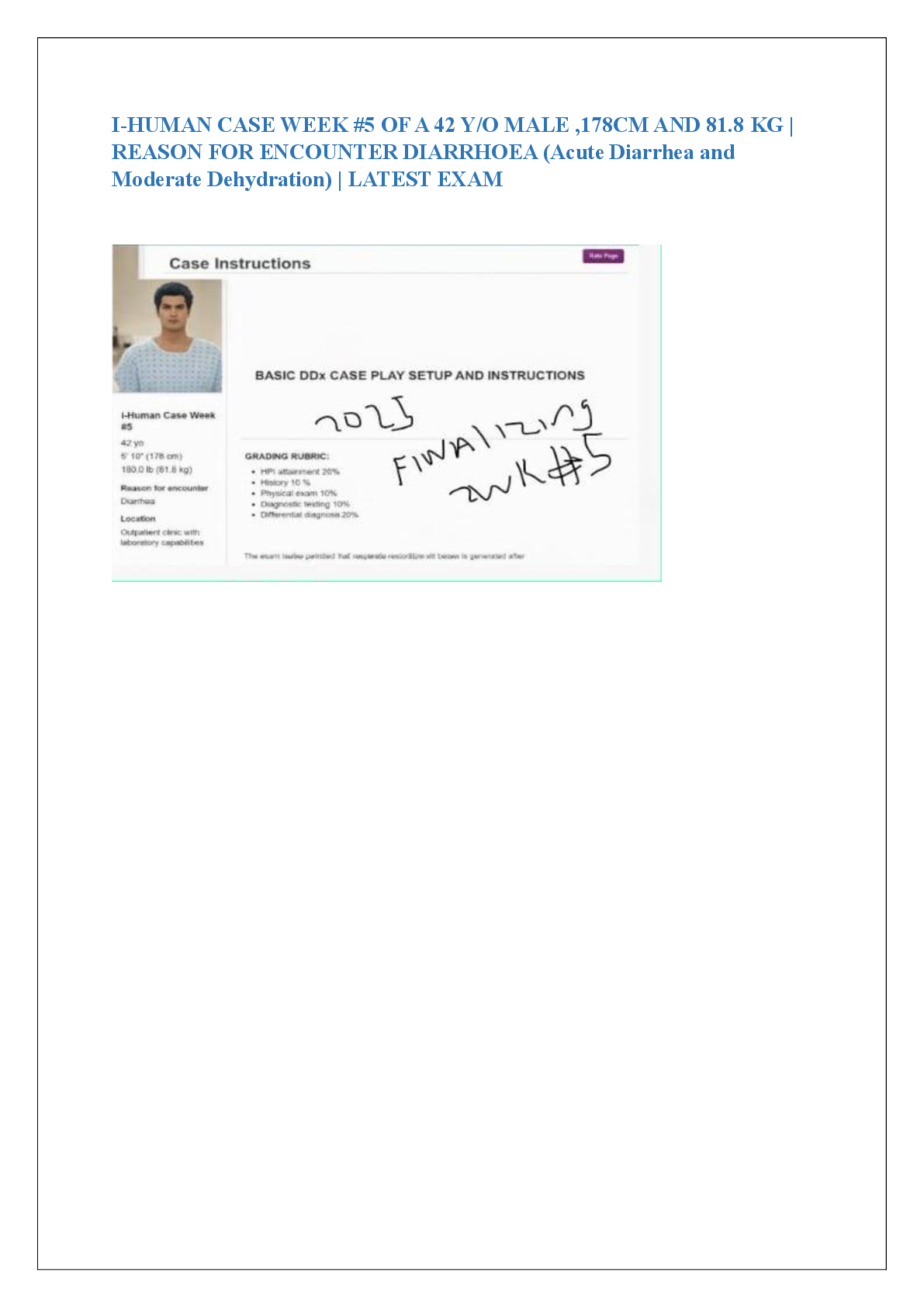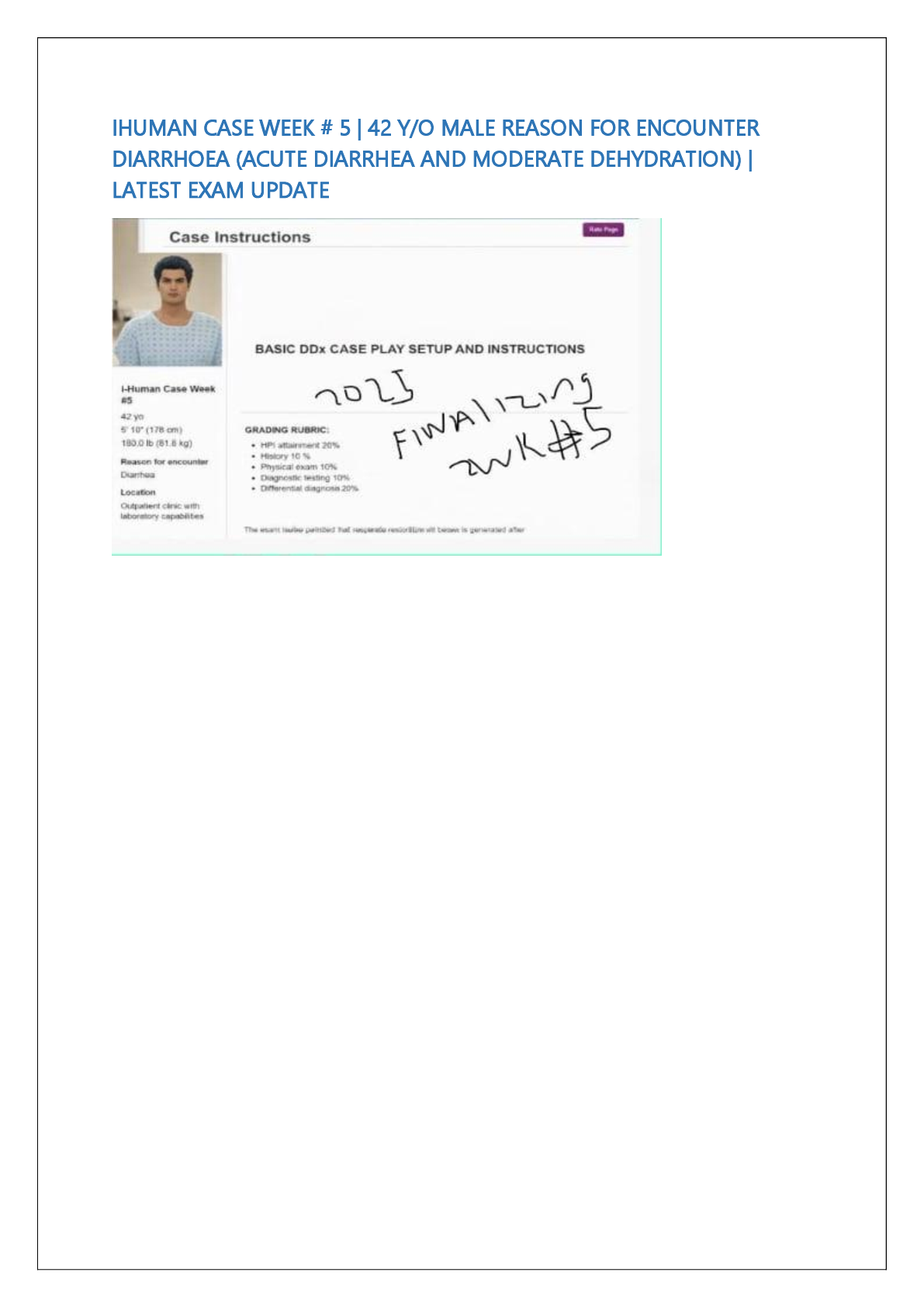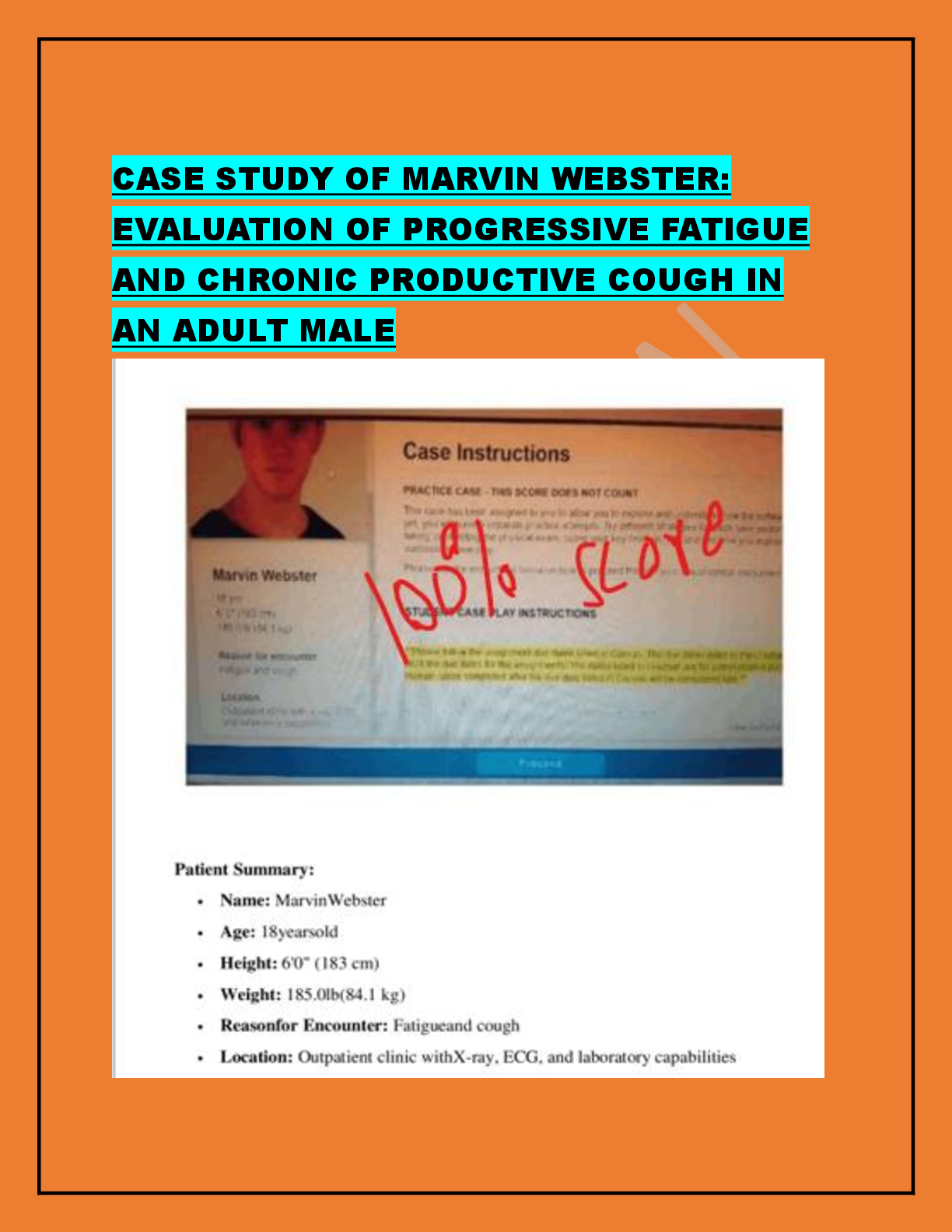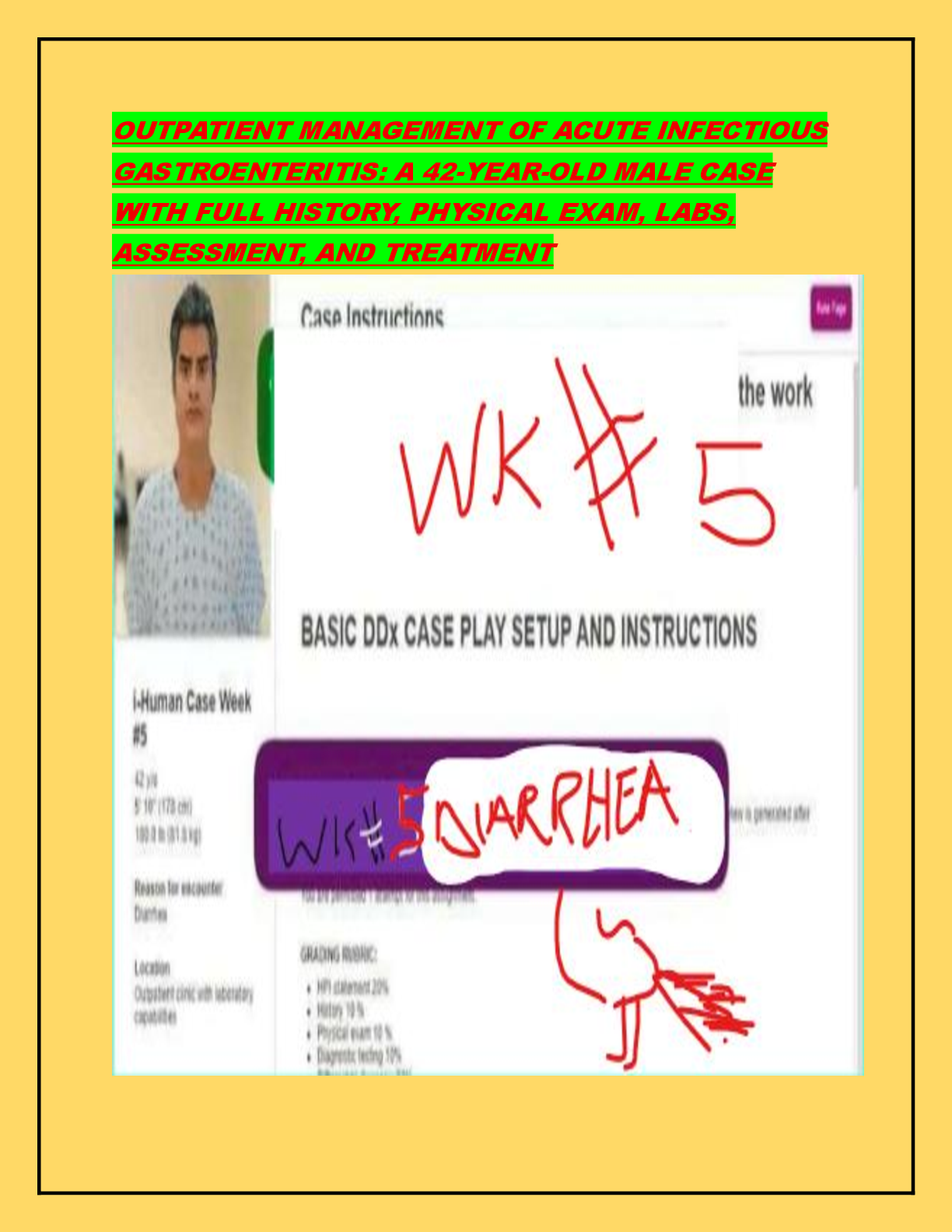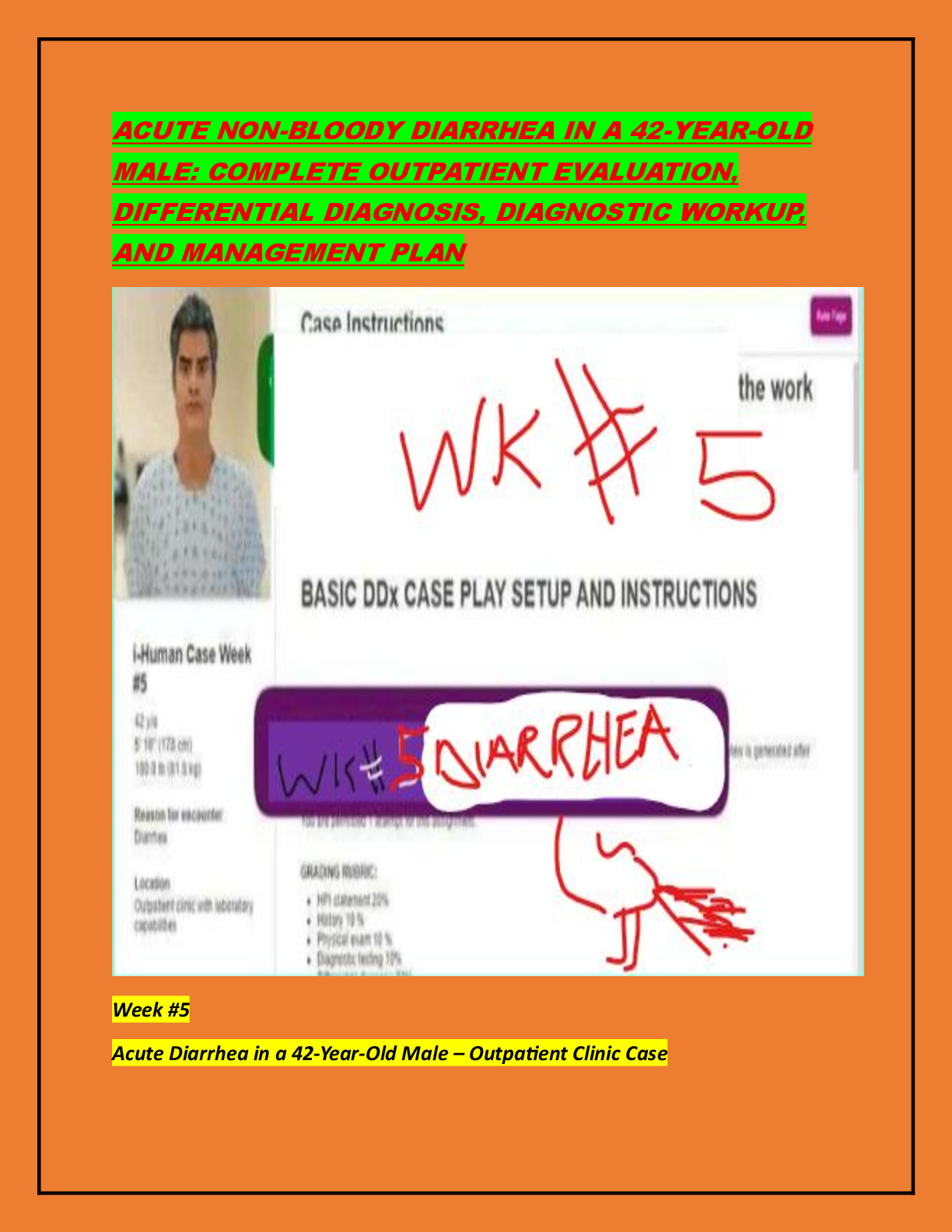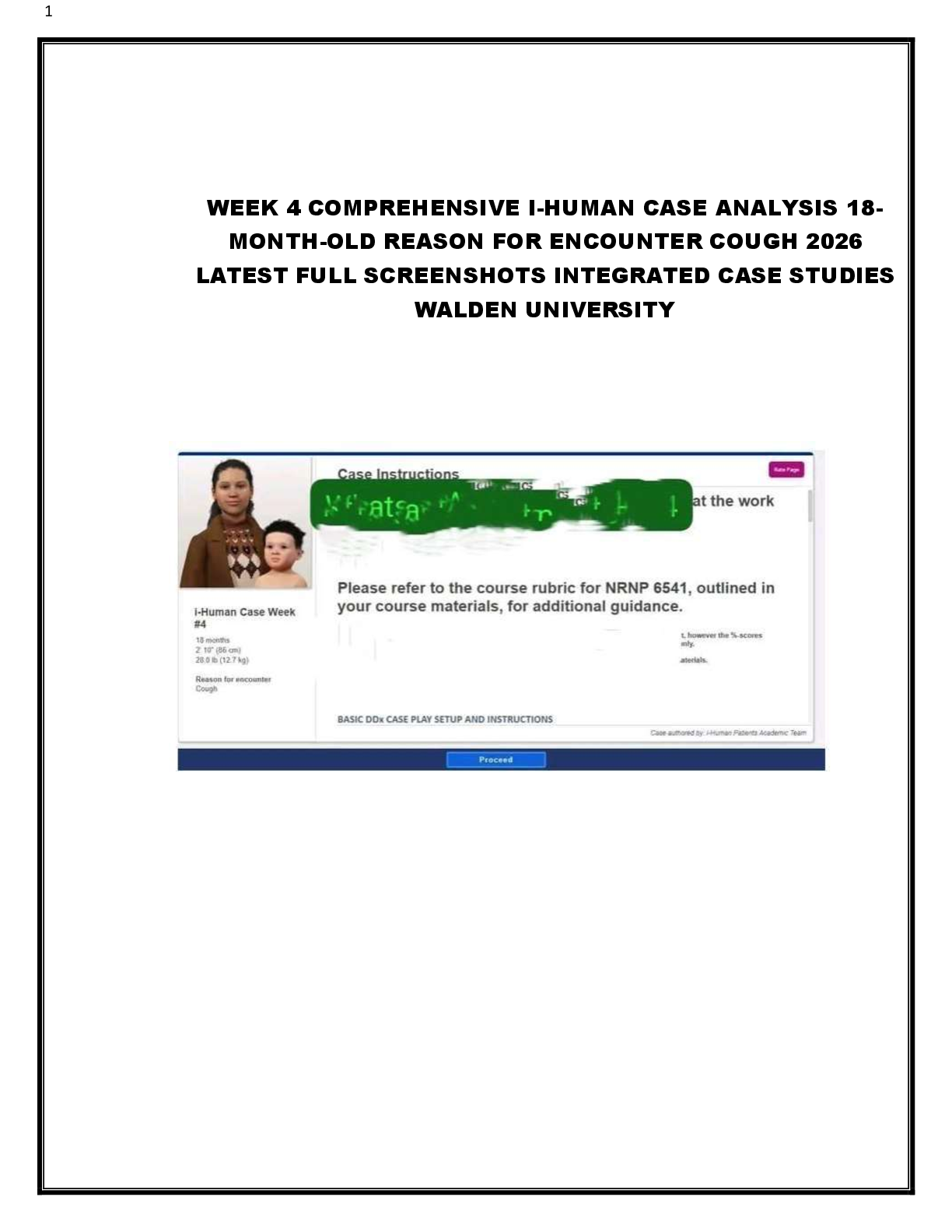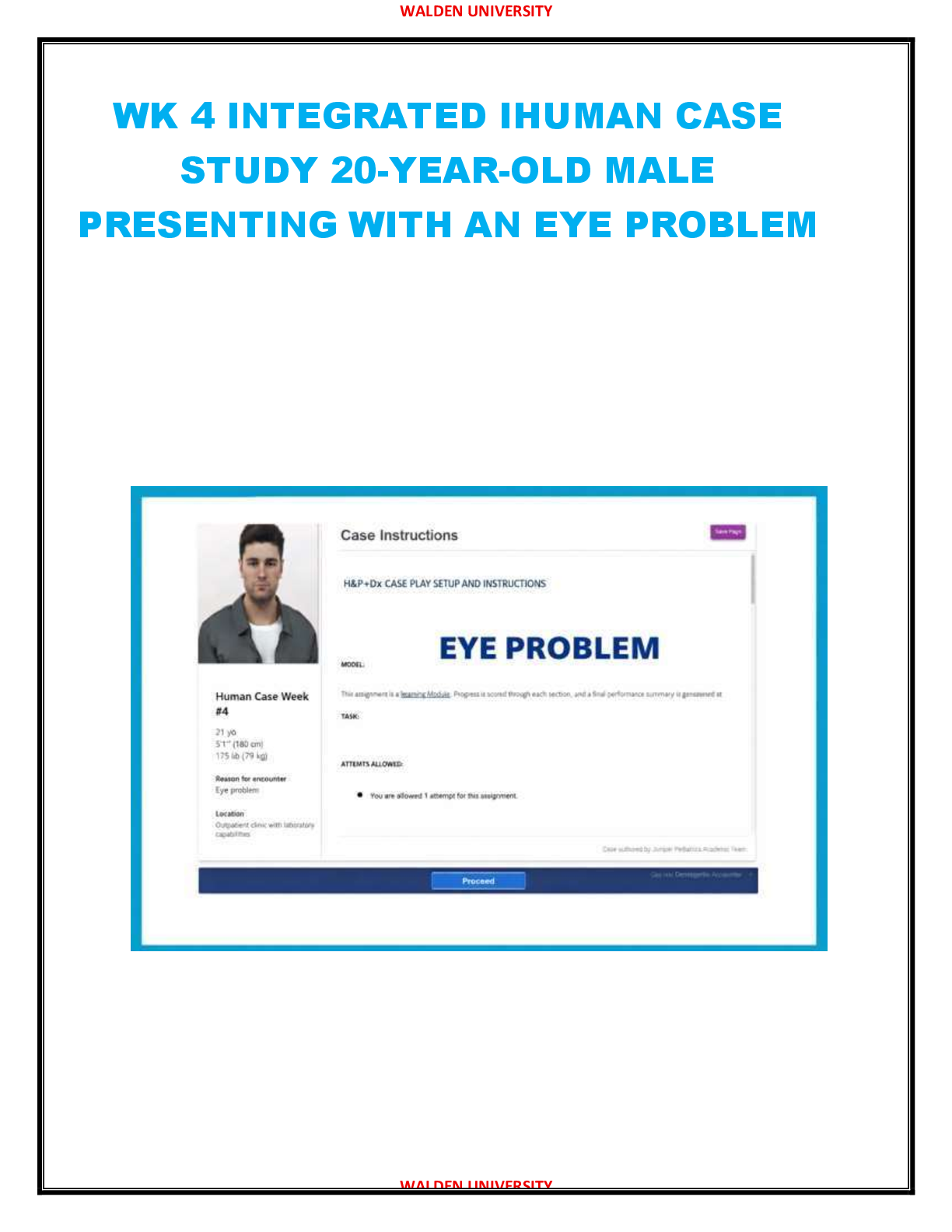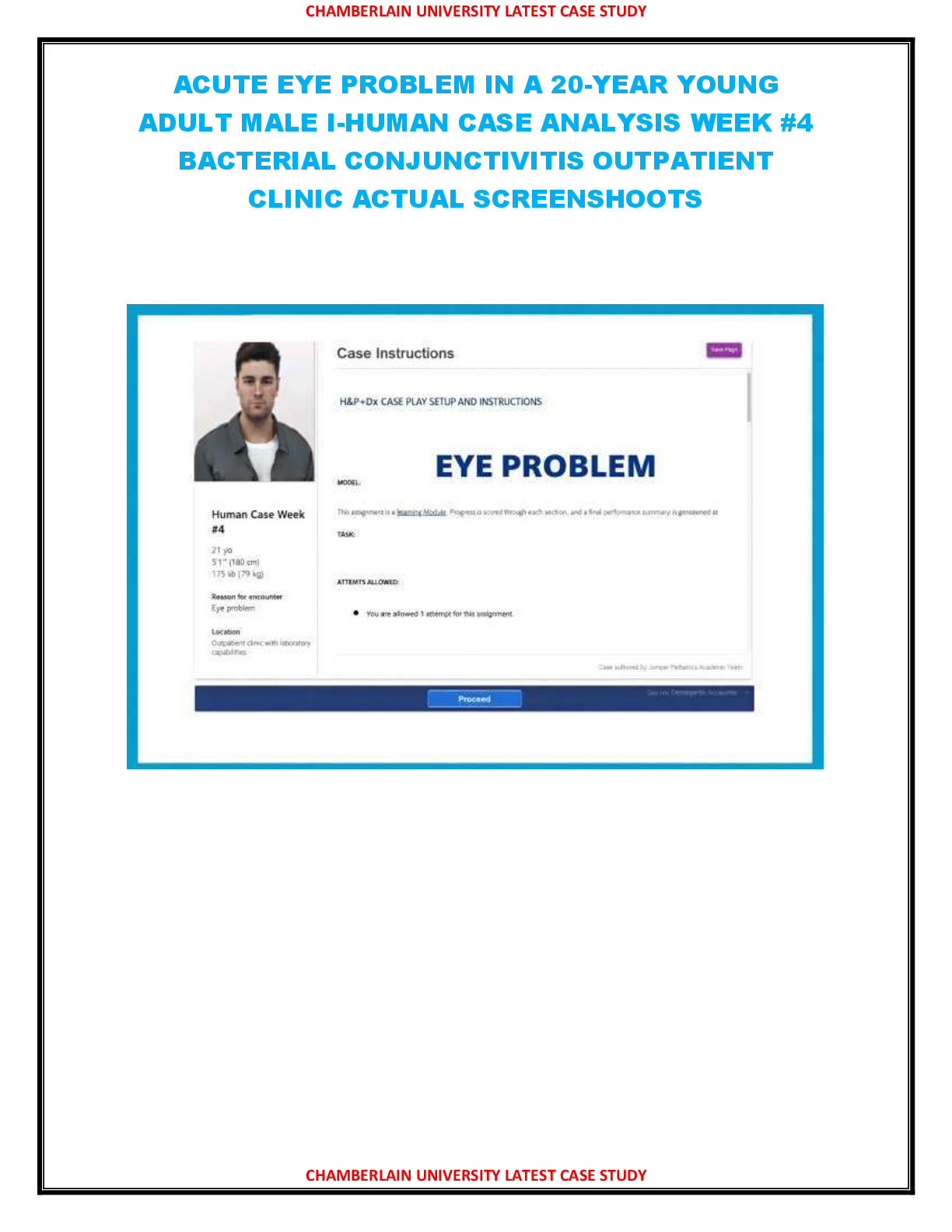*NURSING > CASE STUDY > NR-535 Week 7 Case Study: Academic Integrity – Part I (All)
NR-535 Week 7 Case Study: Academic Integrity – Part I
Document Content and Description Below
NR-535 Week 7 Case Study: Academic Integrity – Part I You are the chairperson of the School of Nursing Grievance Committee. On Monday morning, you receive an e-mail from Larry Learner, who wa ... nts to file a grievance. He has been expelled from the nursing program due to plagiarism. You ask Larry to come to your office to discuss the potential grievance. During the meeting, Larry tells you he has always been an A student. The content of the initial posting must include the following elements: • What are two questions you would ask Larry regarding plagiarism and what is the rationale for each of these questions? 1). Define what plagiarism means in your own words. Rationale: Asking this question gives Larry the opportunity to explain what he understands plagiarism to be. According to a study performed by Basic, et al. (2019) on student’s perception of plagiarism is that the common findings were the concept of plagiarism is not well understood. They also go on to state that student plagiarism is under reported due to the lasting damage that can cause the student and the university. In order to understand Larry’s rationale of what plagiarism means will allow the Grievance Committee to look at this situation from his decision to use the plagiarized information. 2). What portion of the writing is authentically from you? Rationale: By asking this question Larry is given the opportunity to review the citations that were marked with plagiarism and to explain how they are his own authentic words. According to a study performed by Awasthi (2019) students are not always aware or do not understand when to cite, form citations or when to reference. It has been studied that plagiarism is talked about, but students do not fully understand the concept or often times are in a time-crunch to turn in their paper. • What are two questions you would ask the faculty member and what is the rationale for each of these questions? 1). At the beginning of the course did you set out the expectations of the university on academic conduct and the position it takes on plagiarism? Rationale: As a faculty member it is important to discuss the code of conduct and to inform the students of the no tolerance of plagiarism, intentional or unintentional being allowed and how it could lead to expulsion from the university. According to Goodwin and McCarthy (2020) it is important that the standards of academic integrity are instilled in students early on, because it has been noted that students who engage in plagiarism may carry such dishonest practices into the working environment. 2). Was a web-based or electronic software used to detect plagiarism prior to the final due date of the assignment and did the student have the opportunity to discuss any concerns prior to the assignments due date? Rationale: According to Perkins, Gezgin and Roe (2020) One way in which universities have attempted to monitor and control academic integrity is by text matching software such as Turnitin. This type of monitoring is used by many universities and helps alleviate unintentional plagiarism. Students can check their papers and make changes prior to the final due date. If their paper is scored at a high number above the allowed amount the student can make changes and have the opportunity to ask their instructor for help if needed. Reference: Awasthi, S. (2019). Plagiarism and academic misconduct: A systemic review. Journal of Library and Information Technology, 39(2). 94-100. http://www.doi.org/10.14429/djlit.39.2.13622 Basic, Z., Kruzic, I., Jerkovic, I., Buljan, I. & Marusic, A. (2019). Attitudes and knowledge about plagiarism among university students: Cross-sectional survey at the university of split. Science and Engineering Ethics, 25(5). 1467-1483. http://www.doi.org/10.1007/s11948- 018-0073-x Goodwin, J. & McCarthy, J. (2020). Explaining plagiarism for nursing students: An educational tool. Teaching and Learning in Nursing, 15(3). 198-203. http://www.doi.org/10.1016/j.teln.2020.03.004 Perkins, M., Gezgin, U. & Roe, J. (2020). Reducin plagiarism through academic misconduct education. International Journal for Educational Integrity, 16(1). 1-15. http://www.doi.org/10.1007/s40979-020-00052-8 [Show More]
Last updated: 3 years ago
Preview 1 out of 2 pages

Buy this document to get the full access instantly
Instant Download Access after purchase
Buy NowInstant download
We Accept:

Also available in bundle (1)
Click Below to Access Bundle(s)

NR 535 Theoretical Foundations & Instructional Strategies For The Nurse Educator (NR 535 Entire Course Week 1 – 8) BUNDLE | 100% CORRECT
NR 535 Week 1 Discussion: Collaboration Café NR-535 Week 1 Discussion: Nursing Education Goals NR 535 Week 1 Learning Styles Quiz Worksheet NR-535 Week 1 Student’s Template: Self-Reflection N...
By Prof. Goodluck 3 years ago
$14.5
17
Reviews( 0 )
$8.50
Can't find what you want? Try our AI powered Search
Document information
Connected school, study & course
About the document
Uploaded On
Jul 04, 2022
Number of pages
2
Written in
All
Additional information
This document has been written for:
Uploaded
Jul 04, 2022
Downloads
0
Views
286



